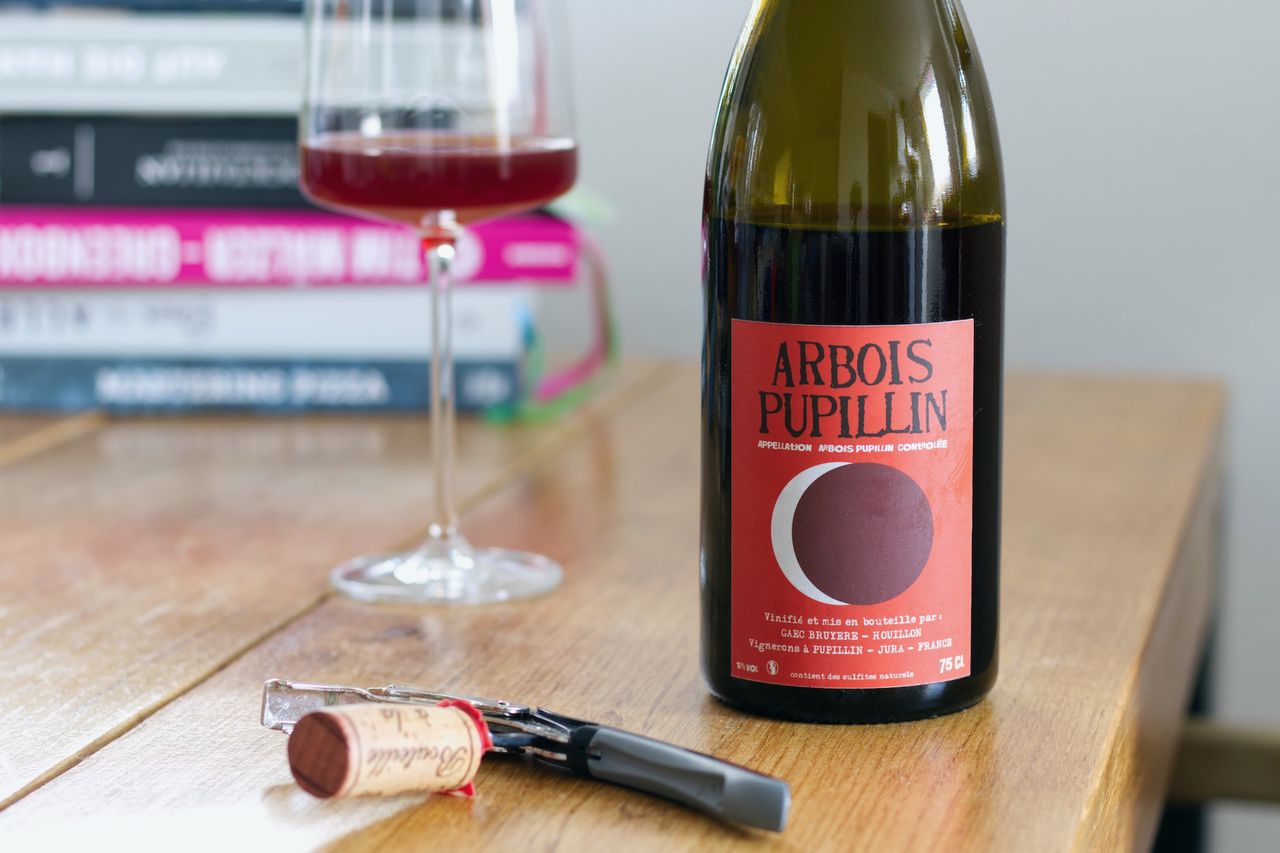Bruyère-Houillon - Ploussard 2017
We drink from the Jura a bottle of Ploussard 2017 from the winery Bruyère-Houillon.

The wine today is one from the popular category of drink or sell, which does not appear here quite so often for obvious reasons. Not because I would sell all the bottles, I have never resold a bottle actually, but because buying is challenging if you don’t want to do it on the secondary market. That’s why I can count the number of such bottles on half a hand. If at all. Nevertheless, I start up a digital search engine for almost every bottle tasted and I went through a brief moment of shock because of the prices they ask for now. That feels even worse than it was with the bottle Chardonnay Les Nouvelles about two years ago and it was already unpleasant to think about it back then. Out of curiosity, I rummaged through old newsletters and at that time the wine was limited to three bottles per person for 45 euros a bottle and the idiot I am, of course I only bought one. Bitter, because that one bottle is gone now. I still chose to write down how it tastes though. On the one hand for my own memory and on the other hand because I have the feeling that the bottles are more passed around than actually drunk and that is not what they are for in the end, am I right?
Ploussard or sometimes also Poulsard is an autochthonous grape variety from the Jura and there are only 300 hectares of it planted there according to Wikipedia. That’s very little. The berries of the variety get quite large and have very thin skins, so that the wines never really get intensely red. Also the Ploussard from Bruyère-Houillon is somewhere between red and ochre and quite transparent despite 32 days on the mash. The grapes are hand-picked and hand-separated from the stalks by a wooden sieve. Then they are fermented in a semi-carbonic maceration. The grapes are filled into the fermenter without being crushed and ferment partly normally and partly intracellularly. Then the wine is filled without filtering, without fining and also without adding sulphur.
Honestly, the color scared me a little bit after opening it. There is already a decent amount of ochre in there, but when the light shines gently through the cloudy, very light-colored wine, then it looks pretty cool too. The fresh smell calms me down then. That’s a bit lemony, there’s cherry somewhere between mushy overripe and still slightly too green and also artificial cherry candy. There’s a bit of earth, some iron and a bit of pepper. That’s unexpectedly complex and although the wine is of course funky also unexpectedly clean. On the tongue it’s not like that at first sip. The acidity dances happily on the natural wine party for two, three wild sips, but then thinks better of it with air and becomes tamer. That also comes unexpectedly honestly. The Ploussard is rather light in taste, a bit of orange zest, a bit of black tea, some tannin and cherry. Above all, it is really long and super fresh. That’s really good.
The next day, the fruit has changed a lot again. It smells somehow like fruit gum, like red tea and like apple peels. Fresh, not fermented. This red cherry fruit gum nose I haven’t had so clearly in a wine for a long time. Plus the freshness from the acidity and also on the tongue the cherry. Here rather fruit than gum. The fine tannin, which like the acidity on the first day is just about to become too natural, too wild, but just stops short of that and finds a great balance. That’s clean and funky at the same time and really, really good. With even more air, the fruit now goes towards plums and dark berries. Something always happens, you can always discover something else. And yet somehow this also remains a bottle of down-to-earth Saufwein that works excellently with smoked fish and bread. Even at 37 degrees outside the door. This is actually a spectacular bottle of wine. Whether it’s worth to you the second market prices that are absolutely crazy in my eyes, everyone has to decide for themselves. It’s not worth it to me. So I drink a glass of the bottle to the dealers who distribute something like this at fair conditions and put it in my head to the beautiful wine memories that probably won’t come back. And, this may sound a bit heretical now, but this is not so super far away from what some wineries here in the area of Württemberg now create out of Trollinger and Co anyway. And those are (at least at the moment) much easier to get and for a fraction of the money. Whether those can also age similarly nicely, that remains to be found out.